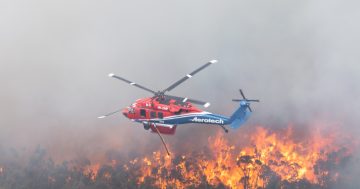
The firefighting fleet, whose mission is to protect grain crops, will include two fixed-wing aircraft. Photo: WA Department of Fire and Emergency Services.
The Western Australian Department of Fire and Emergency Services has mobilised a dedicated aerial firefighting fleet to protect communities and grain crops in regional parts of the state as harvest begins and the risk of fire increases.
The fleet’s deployment is targeted at agricultural regions to enable responders to quickly suppress crop fires, as the multibillion-dollar grain crop comes to fruition.
“As harvest ramps up, so too does the fire risk,” Emergency Services Minister Paul Papalia said.
”Activating our specialised aerial strike teams in the region means we’ll be ready to respond quickly to any fires that threaten crops or communities.
“This initiative also helps to ease the burden on our farmers, who are often the first to face these fires.”
Two strike teams have been stationed from 1 November, in Narrogin and Esperance, to strengthen firefighting capacity to safeguard crops. Each strike team includes two fixed-wing water bombers and a supervision aircraft, placed in strategic positions along the wheatbelt.
Deployments have worked in previous fire seasons. During the 2024-25 harvest, the Grain Harvest Aerial Fleet attended to 18 blazes: four in Geraldton, 12 in Narrogin and two in Esperance.
Agriculture and Food Minister Jackie Jarvis said: “Grain is one of our state’s most valuable exports, and with forecasts pointing to a bumper harvest, it’s critical we do everything we can to support our regional communities.
“We thank our farmers for their resilience and commitment, especially during the challenges of fire season.”
Aircraft deployed for this purpose can cruise at speeds of 280 kilometres per hour and drop more than three tonnes of water, foam or retardant at a time, requiring just minutes to refuel and reload.
This venture is headed by the Department of Fire and Emergency Services and jointly supported by the Department of Biodiversity, Conservation and Attractions and the Department of Primary Industries and Regional Development.
Though the program is effective, rural property owners are urged to prepare a bushfire plan with their family and employees so they know what to do if a bushfire strikes. They are also encouraged to monitor Emergency WA for updates on fire, weather and ongoing incidents as they arise.





